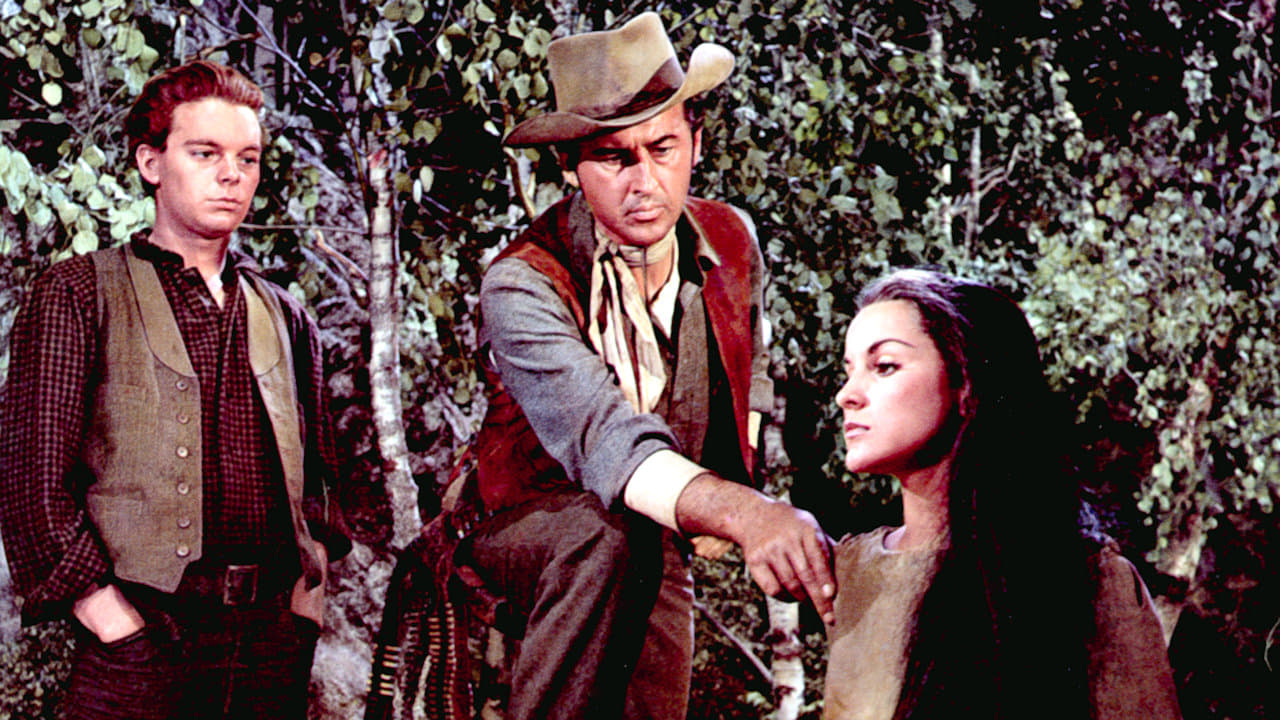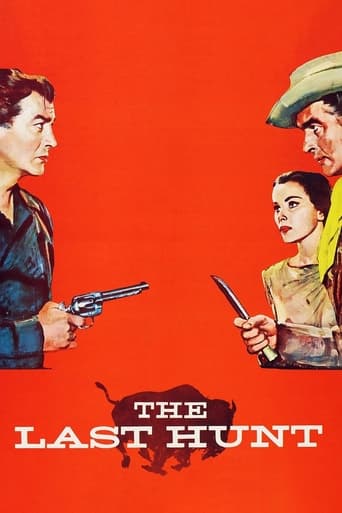

Absolutely Fantastic
... View MoreA different way of telling a story
... View MoreI was totally surprised at how great this film.You could feel your paranoia rise as the film went on and as you gradually learned the details of the real situation.
... View MoreExcellent characters with emotional depth. My wife, daughter and granddaughter all enjoyed it...and me, too! Very good movie! You won't be disappointed.
... View MoreA mediocre "Civil Rights" Western that uses the historical setting to negatively portray racism. Added into the mix here is an animal rights message. It's quaint to see how politically incorrect liberals were in the mid-50's. Not only is a white woman used to play the squaw lead, but many live buffalo are killed on screen during the movie. Even though it is revealed during the initial credits that it was filmed during a federally mandated herd thinning, it would be very controversial to portray this images today.This movie's probably a little overrated because it was written and directed by Richard Brooks, who made a bunch of movies that were much better than this (The Blackboard Jungle, Elmer Gantry, In Cold Blood among others).Here's what was good about the movie:This is a really nice performance by Robert Taylor as an unrepentant racist and killer driven mad by his sins.The main theme of the relationship between killing, hate and insanity is interesting and sophisticated.Nice scenes with buffalo, even if it is a little disturbing to see them shot down for real.Kind of "cool" ending.Here's some of things that brought it down:Overall the plot and script were ragged. The movie does not flow well and has awkward transitions.I didn't buy Stuart Granger as a frontiersman. Looked like he was hanging out in a gay Manhattan piano bar to me.Much of the film takes place in very phony looking sound stage/campsites.The movie just beats you over the head with it racism and animal rights themes. There is no attempt to obfuscate or embed the themes in the plot or characterizations.A little too maudlin in its depiction of the Indians.
... View MoreLike most other reviewers I have first seen this movie (on TV, never on the big screen), when I was a teenager. My Dad has always regarded this film highly and recommended it to me then, and I must say he was not only right, but this movie has stayed with me forever in the more than 2 decades since I saw it first time. I have seen it two or three more times since then (just a few days ago I gave it another watch) and it has not lost anything of its impact with time. It still a great and well worth to be seen movie! Manr regard Peckinpah's RIDE THE HIGH COUNTRY as one of the first and best later western, which had a realistic look at life in the old west, but the hardly known LAST HUNT is definitely the better movie and was even half a dozen years earlier. Actually it was probably 3 decades ahead of its time, or maybe it still is ...Although thinking hard and having certainly seen 100s of western (I like this genre) I can not remember any western as bleak and depressive as this one. Two men bound together, partly by hate, partly by not seeming to have other choices, surrounded by beautiful Ms. Padget, a crippled old man and a young Inian, leading the life of buffalo-killers until fate reaches out for one of them.Nobody who has ever seen this movie will be able to forget its ending and the last frames of this gem. When the camera moves on and away from Mr. Taylor a white buffalo skin comes into sight (on a tree)and echos from the past, when all the hatred began, are present again. Mr. Taylor has got his buffalo, but in the end the buffalo got him. Aside from the top performances of everybody involved, the intelligent script and the great dialogue, it should also be mentioned, that THE LAST HUNT is superbly photograped, I have seldomely seen a western that well shot (aside from the ones directed by Anthony Mann, which are also all superbly photographed), that all the locations are cleverly chosen and that even the soundtrack fits the picture very well.And director BROOKS is really a superb storyteller. Master craftsmanship!He has made quite a couple of really great movies and was successful in nearly every imaginable genre, but even in an as prolific career as this one, THE LAST HUNT still shines as one of his best, if not his best.Definitely would deserve a higher rating, compared to the 7-something RIDE THE HIGH COUNTRY enjoys.
... View More"The Last Hunt" is a western that deals with buffalo hunting. The film is slow and too long -boring at times-, lacks intensity, impact and real interest in the story.Perhaps the unusual ingredient is Robert Taylor's casting as a villain. He plays Charlie Gilson an ambitious and selfish hunter but he clearly overacts in his effort to look mean and ruthless. Stewart Granger, as his sidekick Sandy McKenzie a decent and straight man, renders a better performance. The feminine touch is delivered by pretty Debra Paget as an Indian girl captured by Taylor but more interested in Granger. Russ Tamblyn and the usually correct LLoyd Nolan complete the main cast.No highlights in this movie -just a standard one- and only some good outdoor wide-open photography and a sort of original "finale" for the villain. Not much anyway.
... View MoreI had watched several days film shooting of this movie that summer,the end result was just two scenes in the movie. The location was Sylvan Lake in the Black Hills. Bring the wagon,stop the wagon etc . So this Dakota youth looked forward to seeing the movie and was not disappointed. The local buffalo herd was being culled so the shooting scenes were for real. (yes Doris, animals were hurt during filming) I think the ending was copied by Jack Nicholson in the Shining? A great western/social comment from the 50's. This should be in the same class as High Noon for real western drama or used as a social statement like Blackboard Jungle or Rebel Without A Cause was for 50's youth.
... View More